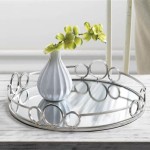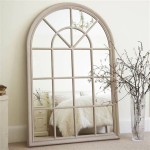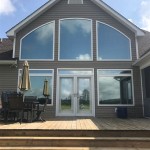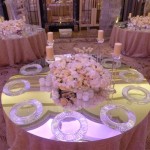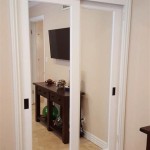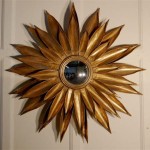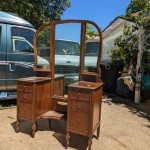What Can I Use To Hang My Mirror On The Wall?
Hanging a mirror securely and aesthetically requires careful consideration of the mirror's weight, size, and the wall's construction. A variety of hanging hardware options cater to different needs and wall types. Choosing the right hardware ensures the mirror remains stable and prevents damage to both the mirror and the wall.
Heavy-Duty Solutions for Large, Heavy Mirrors
For heavier mirrors, especially those exceeding 25 pounds, robust mounting hardware is essential. Traditional options include heavy-duty D-rings or J-hooks attached to the back of the mirror frame. These are typically used in conjunction with wall anchors specifically designed for heavier weights. Toggle bolts are a popular choice for drywall, as they expand behind the wall to provide a more secure grip. For masonry walls, expansion bolts offer a similar level of security.
French cleats offer another secure and versatile solution for heavier mirrors. A French cleat consists of two interlocking pieces of wood, metal, or plastic. One section is attached to the wall, and the other to the back of the mirror. The angled design of the cleat creates a strong and stable connection when the two pieces are interlocked. This method is especially beneficial for large, heavy mirrors, as it distributes the weight evenly across the cleat.
Lightweight Options for Smaller Mirrors
Lighter mirrors often provide more flexibility in hanging methods. Adhesive strips specifically designed for mirrors can be a convenient and damage-free option for drywall or other smooth surfaces. These strips are available in varying weight capacities and are easy to apply and remove. However, it's crucial to follow the manufacturer's instructions carefully to ensure proper adhesion and weight limits.
Small nails or picture hangers can also be utilized for lighter mirrors. While these methods are less robust than heavy-duty options, they are suitable for mirrors hung on solid wood studs or walls with sufficient structural support. Using a stud finder can help locate the studs for optimal nail placement and a more secure hold.
Wire hangers attached to D-rings or screw eyes on the back of the mirror provide another hanging option. The wire is then hung on a picture hook or nail in the wall. This method is suitable for lighter to medium-weight mirrors and offers flexibility in adjusting the mirror's height.
Understanding Wall Types and Anchors
The type of wall plays a critical role in choosing the appropriate hanging hardware. Drywall, plaster, concrete, and brick each require different anchor types for optimal security. Drywall, being relatively less dense, necessitates specific anchors designed to grip the material effectively. Toggle bolts and molly bolts are commonly used for drywall, offering varying weight capacities.
For plaster walls, which are denser than drywall, heavier-duty anchors may be necessary. Expanding anchors or screw-in anchors designed for plaster are often suitable choices.
Concrete and brick walls, being the most robust, require specialized anchors such as concrete screws or masonry anchors. Drilling pilot holes is usually necessary for these wall types to ensure proper anchor placement and prevent damage.
Preparing the Wall and Mirror
Before hanging any mirror, proper preparation is essential. This includes accurately measuring and marking the desired location on the wall, ensuring it is level. For heavier mirrors, using a level is crucial to avoid uneven hanging. The back of the mirror should also be inspected to determine the most suitable attachment points for the chosen hardware.
Cleaning the wall surface where the adhesive strips or anchors will be applied is also recommended. This ensures optimal adhesion and prevents dust or debris from interfering with the hanging process.
Safety Considerations
When hanging heavy mirrors, utilizing appropriate safety measures is paramount. Wearing safety glasses protects the eyes from potential debris during drilling or hammering. If working with power tools, ensuring proper ventilation is also important.
Having an assistant when hanging large or heavy mirrors is recommended. This helps manage the weight and ensures proper alignment during the hanging process, reducing the risk of accidents or damage to the mirror or wall.
Choosing the Right Hardware
Selecting the appropriate hardware depends on a combination of factors, including the mirror's weight, size, and the wall type. Consulting with a hardware store professional can provide valuable guidance in choosing the correct hardware for specific needs. Providing accurate information about the mirror and wall type ensures the recommendation is tailored for optimal security and stability.

How To Hang A Heavy Full Length Leaner Mirror On The Wall House Of Hepworths
:strip_icc()/CathieHong-EarthyMckay_7-a8255e1f4d9d4a95b38de270b79d8e83.jpeg?strip=all)
4 Easy Ways To Hang A Heavy Mirror

3 Simple Ways To Hang A Mirror On Wall Without Nails Wikihow

How To Hang A Large Or Heavy Mirror

How To Hang A Heavy Mirror Lowe S

How To Hang A Mirror The Best Way On Drywall
How To Hang A 100 Pound Mirror On Drywall Quora
:strip_icc()/ScreenShot2022-04-28at1.12.19PM-e055476c70c6438585fa7c5cd531edcf.png?strip=all)
4 Easy Ways To Hang A Heavy Mirror

How To Hang A Mirror With Ease Framed Frameless Heavy Mirrors And More Real Homes

How To Hang A Heavy Full Length Leaner Mirror On The Wall House Of Hepworths

